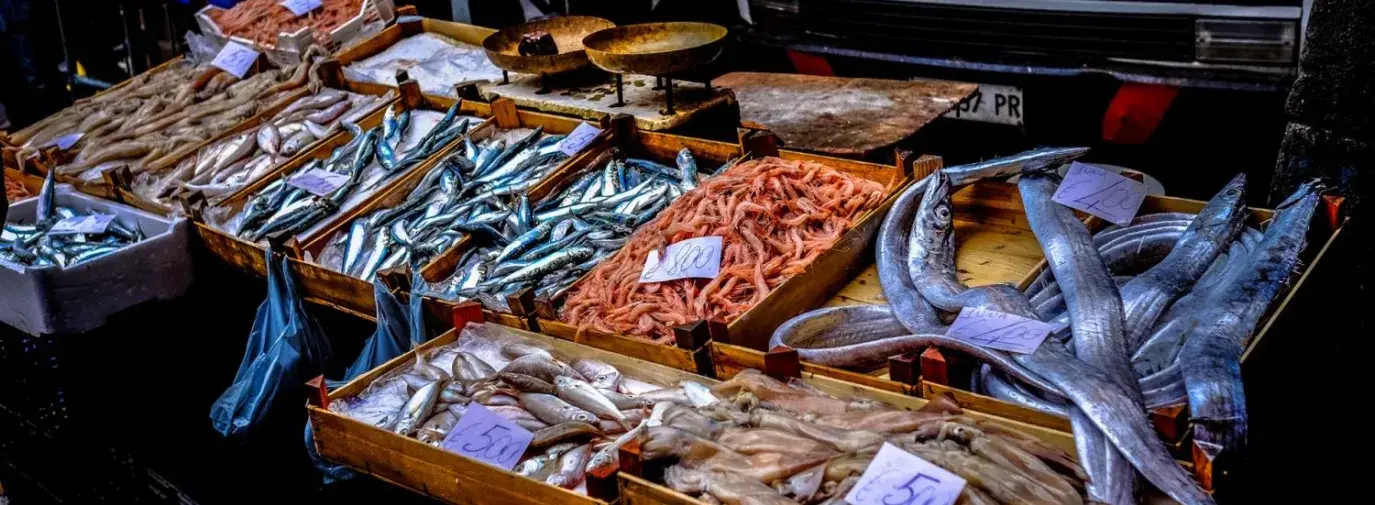
As media attention causes more and more consumers to become aware of the troublesome levels of toxins in certain kinds of fish, the seafood industry is starting to feel the effects.When the Food and Drug Administration (FDA) and Environmental Protection Agency (EPA) issued an advisory in March 2004 suggesting that pregnant women and children limit their consumption of canned tuna due to mercury contamination, tuna sales were already in a decline, and continued to drop. Canned tuna sales dropped 30 percent between 2000 and 2014, according to the Washington Post.
"There’s news circulating that there are contaminants in seafood, but it’s so confusing, I think many consumers just walk past the seafood counter altogether and get their protein from other sources,” says Henry Lovejoy, president and founder of EcoFish, a sustainable seafood company.
As a consumer, how do you know which types of seafood are safe for you and your family? How do you know which are being overfished, contributing to the decline of our oceans? Fortunately, it’s getting simpler every day to get the health benefits of seafood without the toxins, and without harming the marine environment.
Fish and Human Health
The health benefits of eating seafood are considerable:
- Seafood is low in fat and calories.
- It’s a great source of high-quality protein.
- Omega-3 oils, which occur in abundance in mackerel, albacore tuna, salmon, herring, sardines, and lake trout—for their abundance of omega-3 oils. Omega-3s help prevent blood clots, promote a healthy heart, and may even help alleviate rheumatoid arthritis, allergies, irritable bowel syndrome, cardiac arrhythmia, and depression.
Despite its benefits, seafood can be dangerous to your health when contaminated with industrial chemicals, pesticides, and heavy metals—most notably mercury and PCBs—which has too often been shown to be the case in recent studies.
Mercury
"Acute or chronic mercury exposure can cause adverse effects during any period of development. Mercury is a highly toxic element; there is no known safe level of exposure," according to a 2011 paper called "Mercury Exposure and Children’s Health" from the National Institutes of Health. "Ideally, neither children nor adults should have any mercury in their bodies because it provides no physiological benefit."
The National Institute of Health (NIH) notes that “exposure [to mercury] results principally from consumption by pregnant women of seafood contaminated by mercury.” And the EPA and FDA issued a joint statement in March 2004 acknowledging that “nearly all fish and shellfish contain traces of mercury.”
In the 2004 statement, the FDA and EPA warned pregnant women, women of child-bearing age, nursing mothers, and young children against eating shark, swordfish, king mackerel, and tilefish due to high mercury levels. They also warned these vulnerable groups to eat only six ounces of albacore tuna per week, also due to mercury contamination.
The nonprofit watchdog Environmental Working Group (EWG) finds the FDA-EPA fish consumption guidelines to be too lax, stating that if pregnant women, women of child-bearing ages, and children follow these guidelines, EWG studies indicate they will go over the safe level for mercury in their blood.
Corroborating the EWG’s warning, the National Institutes of Health released a study in March 2005 stating that the annual cost of mercury’s damage to babies’ developing brains is $8.7 million. Study researchers explain that between 316,000 and 637,000 children each year have cord blood mercury levels at levels associated with loss of IQ, which not only results in quality of life issues, but “causes diminished economic productivity that persists over the entire lifetime of these children.”
Polychlorinated biphenyls (PCBs)
Another problematic group of toxins that has made headlines after being found in fish are PCBs. These are synthetic chemicals released into the environment through industrial manufacturing. California’s Proposition 65 recognizes PCBs as carcinogens, and the EPA says that PCBs act as endocrine disruptors in rats exposed to high levels.
Recent studies have pointed to farmed salmon as being particularly vulnerable to PCB contamination. This is most likely due to farmed salmon being fed ground-up fish with high concentrations of PCBs in their fat and oils, according to three independent studies, including one conducted by the School of Public Health at the University of Illinois at Chicago.
As is the case with mercury, researchers are still trying to assess what effect PCBs have on human health at low and moderate levels, or due to the fact that they build up in your body over time. Since concerns about PCBs in food are relatively new, it’s difficult to know what types of fish to avoid besides farmed salmon. Henry Lovejoy of EcoFish recommends avoiding larger fish at the top of the food chain, since they accumulate more PCBs than small fish. You can also look for seafood that’s specifically been tested for PCBs.
Though not as prevalent as mercury and PCBs, other toxins have also been found in fish, including the known carcinogen dioxin, as well as the EPA-banned pesticide dieldrin, which is a neuro-, liver- and immunotoxin.
Fish and the Environment
Some types of fish have environmental problems associated with them, making them a not-so-good choice for your dinner plate. These include:
- Overfishing: We’re catching and eating certain types of fish, such as Chilean sea bass, faster than they can replenish their populations.
- Catching Methods: Environmentally unsound catching methods are a major contributor to the decline of our oceans. The ocean floor and coral reefs are being severely damaged by bottom trawlers, for example, which scrape the sea floor in an effort to catch bottom-dwelling fish. Also, when fishers use large nets and bottom trawlers, which take in everything in their path, they’re usually searching for a specific type of fish. Consequently, only a small portion of what they catch is kept, and the bycatch, or what’s left over, gets thrown back—usually dead or dying. The United Nations estimates that 27 million tons of fish are unintentionally caught and thrown away by commercial fishers each year.
- Farming Methods: Certain types of fish are conventionally farmed in ways that are harmful to their aquatic environments. For example, corporate fish farms often create fish monocultures that pollute their surrounding environments with waste, chemicals, and even antibiotics.
Our "Safe, Sustainable Seafood Guide" contains everything you need to know to choose those types of fish that are harvested in ways that aren't contributing to our oceans' decline. (Environmental data from the Monterey Bay Aquarium, the Blue Ocean Institute, and Environmental Defense.)
Safe, Eco-Friendly Alternatives
For nearly every type of seafood you’re craving, there’s a sustainable alternative. For example, many types of salmon contain high levels of toxins and are likely to be farmed in unsustainable ways. But if you purchase from Copper River Seafoods, you’ll enjoy wild Alaskan salmon that is sustainably fished by locals—who are paid a fair price for their fish—and that are tested as having low levels of PCBs and mercury.
EcoFish offers one of the country’s widest varieties of sustainably farmed and wildly harvested fish, independently tested for PCB and mercury levels and labeled with consumption recommendations for women of child-bearing age by Seafood Safe. Their selections include several alternatives to the otherwise “problematic” and “avoid” categories of our seafood card, from wild sashimi-grade Oregon albacore tuna, to organic Florida white shrimp, to wild South American mahi-mahi.
Several other sustainable seafood companies, listed below, sell healthy, eco-friendly seafood direct to consumers. You can also look for the following labels at your local seafood outlet:
- Marine Stewardship Council (MSC): The MSC label appears on several different types of wild fish, indicating that they have been caught using eco-friendly methods. The fisheries are certified sustainable by MSC-approved independent certifying organizations. Though MSC is an independent nonprofit, it was started by Unilever (with the World Wildlife Fund) and still takes contributions from the grocery giant.
- Fishwise: The Fishwise label appears on a variety of seafood. Fishwise labels tell consumers what kind of fish it is, how the fish was caught, where it came from, and how sustainable it is. The labels also bear a color—green for sustainable, yellow for seafood with some environmental problems associated with it, and red for unsustainably caught seafood.Grocery stores must join the Fishwise program to use the labels, and it has been adopted by Target, Albertson's stores, and many natural grocery stores.
- Seafood Safe: Started by EcoFish founder and president Henry Lovejoy, Seafood Safe is the only seafood label that provides consumers with at-a-glance consumption recommendations based upon independent testing for contaminants. The initiative is still very much in its beginning stages—currently, EcoFish is the only company carrying the label, though the program will open up to all seafood companies by next year. How it works is this: Fish carrying the Seafood Safe label display a number, which indicates how many four-ounce servings women of child-bearing age can safely eat of that species per month. (People who fall into other categories can visit the Web site to view their consumption recommendations.) The number is determined by independent testing (by random sample) of the fish for mercury and PCBs—the methodology for which is reviewed by an independent panel of experts. Other toxins will be added to the testing platform as the program develops.
“My dream is to have all seafood sold in the US bear the Seafood Safe label, because consumers deserve to know what they’re eating,” says Lovejoy. “We as a nation need to be a lot more careful in how we use toxic chemicals, and where we put them. What goes around comes around.”







